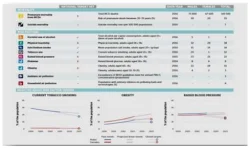2019 / March
3 March 2019, 23:44
2019 / March
Sobirova Guzal Naimovna, Abdullaeva Umida Kurbanovna
3 March 2019, 23:42
2019 / March
Toshmatova Guzal Adilkhodzhaevna
3 March 2019, 23:41
2019 / March
Dilfuza Kasimova, Ermatova Aziza
3 March 2019, 23:39
2019 / March
Urazaliyeva Elmira Ravkatovna, Ermatova Aziza Komiljanovna, Ramanova Dildora Yuldashevna
3 March 2019, 23:37
2019 / March
3 March 2019, 23:36
Actual problems of Natural Sciences / 2019 / March
Kuchkarova Cholpona Habibullaevna
3 March 2019, 23:31
Actual problems of Natural Sciences / 2019 / March
Jumaniyazova Dilnoza Maxsudovna, Zakirov Baxtiyor Sabirjanovich, Jumaniyazov Maxsud Jabbiyevich
3 March 2019, 23:27
Actual problems of Natural Sciences / 2019 / March
Khurshida Salavatova San‘at qizi
3 March 2019, 23:26
Actual problems of Natural Sciences / 2019 / March
3 March 2019, 23:25

